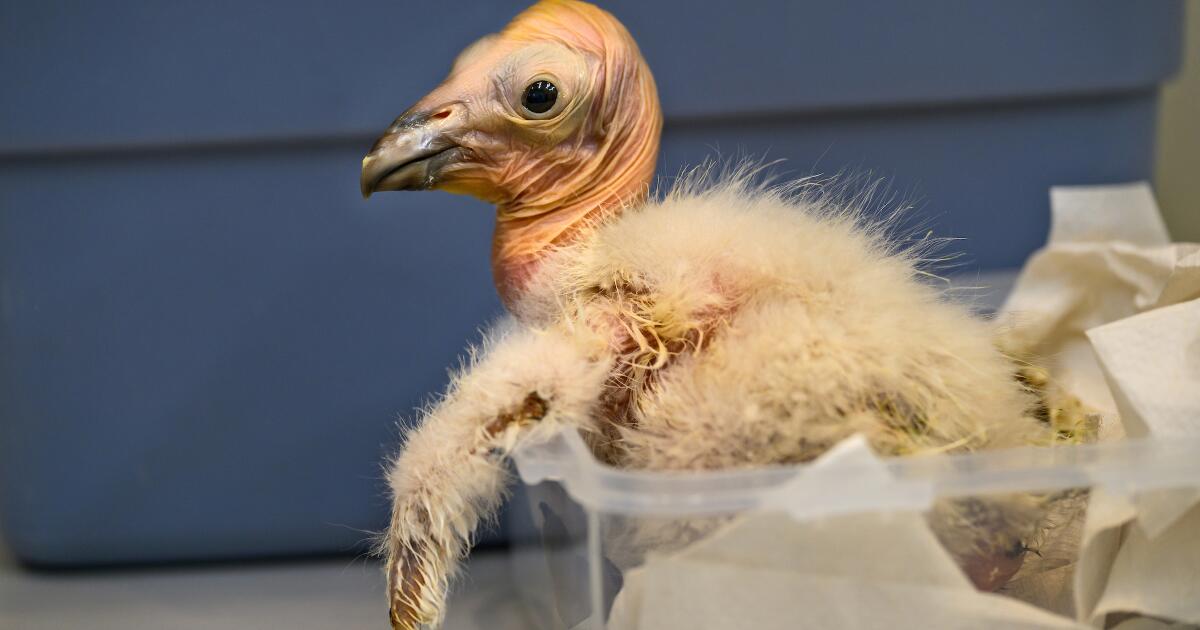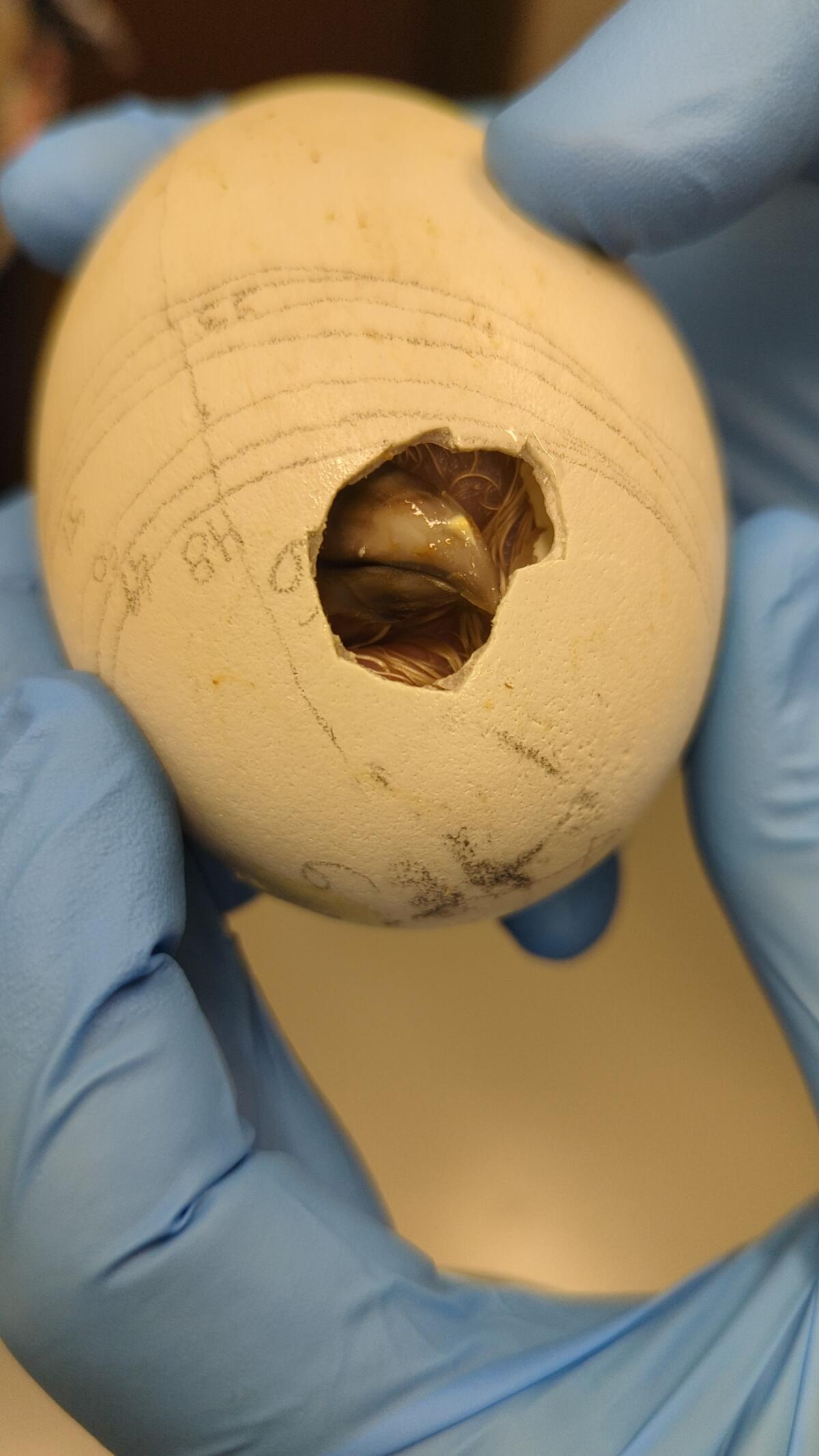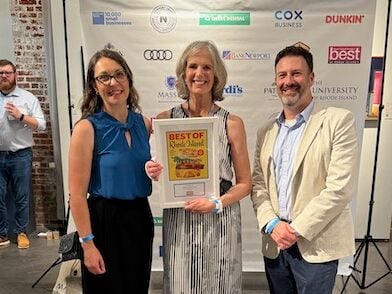Science
What the Supreme Court’s abortion pill case could mean for California

Lee had just been dumped when she found out she was pregnant.
With no car, no job and no support, the 23-year-old — who asked that her last name be withheld for medical privacy — ended up at the virtual clinic Hey Jane, where she was quickly assessed and prescribed abortion medication.
Four months later, thousands of Californians in a similar situation have been holding their breath as the U.S. Supreme Court weighed a case that could rewrite the rules of care in more than two-thirds of U.S. abortions, limiting access to a popular drug even in states where it remains legal.
The justices voiced clear doubts about a lower court’s decision to overrule the Food and Drug Administration and restrict mifepristone — the first in a two-drug protocol that now accounts for 63% of all legal abortions in the United States — signaling they are unlikely to restore byzantine rules for prescribing the medication.
“Do we have to also entertain your argument that no one else … in America should have this drug in order to protect your clients?” Justice Ketanji Brown Jackson said in a pointed exchange later echoed by her frequent rival Justice Neil M. Gorsuch.
But advocates in California say even if the current rules are left in place, the case represents a growing threat to reproductive rights in “sanctuary” states — particularly as legal challenges target telehealth, which has risen to account for 16% of U.S. abortions since 2021.
These numbers do not include the roughly 6,000 abortions estimated to take place outside the formal medical system each month, the overwhelming majority of them likewise induced by a combination of mifepristone and misoprostol procured through the mail, according to a study this week in the medical journal JAMA.
“I’m concerned that people don’t realize how important telehealth is — it’s a major pillar in the abortion care landscape,” said professor Ushma Upadhyay of UC San Francisco, a reproductive healthcare expert. “People don’t understand how important it could become in the future.”
‘Bewildering, surprising and unexpected’
The court’s ruling on mifepristone is not expected until June. The reason the stakes are high is that unlike the decision in Dobbs vs. Jackson Women’s Health Organization, which overturned Roe vs. Wade in 2022, a Supreme Court ruling to restrict the drug would roll back a series of important changes to the way it is prescribed and dispensed nationwide.
Care that can currently be delivered by a nurse-midwife via a brief video call or online questionnaire would revert to a time-consuming and costly series of clinic visits with a physician. Medication abortion could be offered for only 49 days from the start of a patient’s last period, instead of up to 10 weeks as it is today. Those changes would also bar mifepristone prescriptions through telehealth, leaving some to rely on a less effective regimen with more unpleasant side effects.
Telehealth is the only viable option for patients who can’t take a sick day, find a babysitter — data from the Centers for Disease Control and Prevention show the lion’s share of abortion patients are already mothers — or catch a ride to a clinic that may be hours away on public transit, experts say.
“I’ve had patients tell me, ‘I’ve got a job that won’t let me take time off. I’ve got kids and no child care,’” said Dr. Michele Gomez of the MYA Network, a consortium of virtual providers, who has served many patients with Medi-Cal. “Lots of people talk to me while they’re at work. I’ve had so many people [take appointments] with their kids crawling all over them.”
Women who have relied on the medication say it felt like the most convenient — and safest — option.
“I knew the clinic locations, but actually getting there was hard,” Lee said of her abortion. “It all felt so scary, on top of having to be in the situation.”
Gomez said that in years past doctors were required to watch patients take the pill. Eliminating those and other rules helped propel medication abortion from the margins of care to the heart of reproductive rights within the last decade, the Bay Area provider and others said.
“I can send [pills] out by mail any time it works for me,” she said.
The changes also paved the way for clinicians in California and five other states to prescribe and mail abortion medication to patients in jurisdictions where it’s been banned, under so-called shield laws.
“Abortion care via mail is now the most viable form of access for most of the country,” said Kiki Freedman, co-founder and chief executive of Hey Jane, an abortion telehealth startup. “Any change to the way mifepristone is prescribed is an attack on access, period.”
Indeed, a growing number of experts believe the rise of telehealth could explain why abortions jumped in the wake of the Dobbs decision, even as 21 states have partially or completely outlawed the procedure.
“This is bewildering, surprising and unexpected — we expected the numbers to drop,” said Upadhyay. “There’s a lot of unmet need being met through telehealth.”
‘Half the patients I see are sitting in their car’
The meteoric rise of medication abortion is part of the reason antiabortion activists have gone to such pains to get rid of it, many say.
“Telehealth abortion is worrisome to that side because they know that it is safe and it is effective and people can end pregnancies on their own,” said Michele Goodwin, a law professor at UC Irvine and an expert on reproductive justice. “That’s threatening to them.”
Medication abortion using mifepriestone was already cheaper, faster and easier to access than vacuum aspiration and other in-clinic procedures when telehealth became available under emergency pandemic rules in 2020.
But it became radically more accessible and less expensive in 2021, as virtual providers including Hey Jane, Abortion on Demand and 145 Abortion Telemedicine established themselves alongside brick-and-mortar clinics under the FDA’s new guidance.
And more clinicians felt called to offer it in 2022, as state bans pushed abortion seekers to neighboring states, stretching wait times at in-person clinics in Colorado, Illinois and Kansas, where an in-clinic appointment can take weeks to secure.
“Even before the Dobbs decision, I asked myself, what can I do?” said Dr. Stephanie Colantonio, a Los Angeles-based pediatrician who began providing care in 2021. “It was really meaningful to me that I would be able to offer this to people.”
California has also moved to make care more accessible, though barriers remain. Medi-Cal covers about half of all abortions in the state — almost the same as the proportion of births it pays for — but billing for telehealth is still novel, and few providers can do it.
“California only recently updated the law to cover telehealth for abortion last year,” said Upadhyay. “For most [Medi-Cal] patients, they have to decide, do I want free abortion or do I want to pay and get telehealth?”
That decision is often fraught.
“We see a lot of patients on lunch breaks,” said Leah Coplon, a nurse-midwife and director of clinical operations at Abortion on Demand. “I feel like half the patients I see are sitting in their car.”
‘In the comfort of my own home’
Seeking pills through the mail can also be the only physically accessible option for disabled abortion-seekers.
“The disability community is very concerned about this, because this could result in complete denials of care,” said Jillian MacLeod, reproductive justice legal fellow at the Disability Rights Education & Defense Fund, which filed a brief in support of telehealth abortion.
Still others say telehealth simply feels safer to them.
“I wanted to be able to do it in the comfort of my own home,” said Charlie Ann Max, a Los Angeles model who took the pills earlier this year. “It felt the most safe.”
With mifepristone under threat, some providers are looking at alternatives that would keep telehealth available to those who need it most. Many say that would mean prescribing only the second drug in the protocol, misoprostol, which is used to induce labor as well as for pregnancy termination.
“That would be the backup,” said Dr. Jayaram Brindala of 145 Telehealth. “It’s not ideal clinically, but still a good option for people who are in the first 13 weeks.”
Gomez agreed. “It’s very effective, but it’s not what I would recommend for my sister or my best friend or my daughter,” the doctor said.
Last year, Gov. Gavin Newsom announced California would stockpile the drug to maintain an emergency supply.
“Those who oppose abortion access have made it clear that they will not stop seeking new ways to roll back access and abortion rights across the country,” state Atty. Gen. Rob Bonta said.
His Department of Justice will use “every tool” at its disposal to keep California a haven for reproductive healthcare, he said.
“No matter what happens in the mifepristone case in the Supreme Court, it’s not going to be the end of our fight,” Bonta said.

Science
Q&A: Learn how Olympians keep their cool from Team USA's chief sports psychologist

Your morning jog or weekly basketball game may not take place on an Olympic stage, but you can use Team USA’s techniques to get the most out of your exercise routine.
It’s not all about strength and speed. Mental fitness can be just as important as physical fitness.
That’s why the U.S. Olympic & Paralympic Committee created a psychological services squad to support the mental health and mental performance of athletes representing the Stars and Stripes.
“I think happy, healthy athletes are going to perform at their best, so that’s what we’re striving for,” said Jessica Bartley, senior director of the 15-member unit.
Bartley studied sports psychology and mental health after an injury ended her soccer career. She joined the USOPC in 2020 and is now in Paris with Team USA’s 592 competitors, who range in age from 16 to 59.
Bartley spoke with The Times about how her crew keeps Olympic athletes in top psychological shape, and what the rest of us can learn from them. Her comments have been edited for length and clarity.
Why is exercise good for mental health?
It gets you moving. It gets the endorphins going. And there’s often a lot of social aspects that are really helpful.
There are a number of sports that stretch your brain in ways that can be really, really valuable. You’re thinking about hand-eye coordination, or you’re thinking about strategy. It can improve memory, concentration, even critical thinking.
What’s the best way to get in the zone when it’s time to compete?
When I work with athletes, I like to understand what their zone is. If a 0 or a 1 is you’re totally chilled out and a 10 is you’re jumping around, where do you need to be? What’s your number?
People will say, “I’m at a 10 and I need to be at an 8 or a 7.” So we’ll talk about ways of bringing it down, whether it’s taking a deep breath, listening to relaxing music, or talking to your coach. Or there’s times when people say they need to be more amped up. That’s when you see somebody hitting their chest, or jumping up and down.
If you make a mistake in the middle of a competition, how do you move on instead of dwelling on it?
I often teach athletes a reset routine. I played goalie, so I had a lot of time to think after getting scored on. I would undo my goalie gloves and put them back on, which to me was a reset. I would also wear an extra hairband on my wrist, and when I would snap it, that meant I needed to get out of my head.
It’s not just a physical reset — it helps with a mental reset. If you do the same thing every single time, it goes through the same neural pathway to where it’s going to reset the brain. That can be really impactful.
Do Olympic athletes have to deal with burnout?
Oh, yeah. Everybody has a day where they don’t want to do whatever it is. That’s when you have to ask, “What’s in my best interests? Do I need a recovery day, or do I really need to get in the pool, or get in the gym?”
Sometimes you really do need what we like to refer to as a mental health day.
How can you psych yourself up for a workout when you just aren’t feeling it?
It’s really helpful to think about why you’re doing this and why you’re pushing yourself. Do you have goals related to an activity or sport? Is there something tied to values around hard work or discipline, loyalty or dependability?
When you don’t want to get in the gym, when you don’t want to go for a run, think about something bigger. Tie it back to values.
Is sleep important for maintaining mental health?
Yes! We started doing mental health screens with athletes before the Tokyo Games. We asked about depression, anxiety, disordered eating and body image, drugs and alcohol, and sleep. Sleep was actually our No. 1 issue. It’s been a huge initiative for us.
How much sleep should we be getting?
It’s different for everyone, but generally we know seven to nine hours of sleep is good. Sometimes some of these athletes need 10 hours.
I highly recommend as much sleep as you need. If you didn’t get enough sleep, napping can be really valuable.
Is napping just for Olympic athletes or is it good for everybody?
Everybody! Naps are amazing.
What if there’s no time for a nap?
There are different ways of recharging. Naps could be one of them, but maybe you just need to get off your feet for 20 minutes. Maybe you need to do a meditation or mindfulness exercise and just close your eyes for five minutes.
How do you minimize the effects of jet lag?
We try to shift one hour per day. That’s the standard way of doing it. If you can, it’s super helpful. But it’s not always possible.
The thing we tell athletes is that our bodies are incredible, and you will even things out if you can get back on schedule. One or two nights of crummy sleep is not going to impact your overall performance.
What advice do you give athletes who have trouble falling asleep the night before a competition?
You don’t want to change much right before a competition, so I usually direct athletes to do what they would normally do.
Do you need to unwind by reading a book? Do you need to talk on the phone with somebody and get your mind off things? Can you put your mind in a really restful place and think about things that are really relaxing?
Are there any mindfulness or meditation exercises that you find helpful?
There are some athletes who benefit greatly from an hourlong meditation. I love something quick, something to reset my brain, maybe close my eyes for a minute.
If I’m feeling like I need to take a moment, I love mindful eating. You savor a bite and go, “Oh, my gosh, I have not been fully engaged with my senses today.” Or you could take a mindful walk and take in the sights, the smells, all of the things that are around you.
What do you eat when you need a quick nutrition boost?
Cashews. I tend to carry those with me. They’ve got enough energy to make sure I keep going, physically.
I’ve always got gummy bears on me too. There’s no nutritional value but they keep me going mentally. I’m a big proponent of both.
Is it OK to be superstitious in sports?
It depends how flexible you are. Maybe you put on your socks or shoes a certain way, or listen to certain music. Routines are really soothing. They set your brain up for success in a particular performance. It can be really, really helpful.
But I’ve also seen an athlete forget their lucky underwear or their lucky socks, and they’re all out of sorts. So your routine has to be flexible enough that you’re not going to completely fall apart if you don’t do it exactly.
Are Olympians made of stronger psychological stuff than the rest of us?
Not necessarily. There are some who don’t get feathers ruffled and have a high tolerance for the fanfare. There’s also a lot of regular human beings who just happen to be fantastic at a particular activity.
Science
‘Ready, Steady, Slow’: Championship Snail Racing at 0.006 M.P.H.

Earlier this month, the rural village of Congham, England, played host to a less likely group of athletes: dozens of garden snails. They had gathered to compete in the World Snail Racing Championships, where the world record time for completing the 13.5 inch course stands at 2 minutes flat. At that speed — roughly 0.006 miles per hour — it would take the snails more than six days to travel a mile.
Science
Caring for condor triplets! Record 17 chicks thrive at L.A. Zoo under surrogacy method

A new method of rearing California condors at the Los Angeles Zoo has resulted in a record-breaking 17 chicks hatched this year, the zoo announced Wednesday.
All of the newborn birds will eventually be considered for release into the wild under the U.S. Fish and Wildlife Service’s California Condor Recovery Program, a zoo spokesperson said.
“What we are seeing now are the benefits of new breeding and rearing techniques developed and implemented by our team,” zoo bird curator Rose Legato said in a statement. “The result is more condor chicks in the program and ultimately more condors in the wild.”
Breeding pairs of California condors live at the zoo in structures the staff “affectionately calls condor-miniums,” spokesperson Carl Myers said. When a female produces a fertilized egg, the egg is moved to an incubator. As its hatching approaches, the egg is placed with a surrogate parent capable of rearing the chick.
California condor eggs are cared for at L.A. Zoo. The animal is critically endangered.
(Jamie Pham / L.A. Zoo)
This bumper year of condor babies is the result of a modification to a rearing technique pioneered at the L.A. Zoo.
Previously, when the zoo found itself with more fertilized eggs than surrogate adults available, staff raised the young birds by hand. But condors raised by human caretakers have a lower chance of survival in the wild (hence the condor puppets that zookeepers used in the 1980s to prevent young birds from imprinting on human caregivers).
In 2017, the L.A. Zoo experimented with giving an adult bird named Anyapa two eggs instead of one. The gamble was a success. Both birds were successfully released into the wild.
Faced with a large number of eggs this year, “the keepers thought, ‘Let’s try three,’” Myers said. “And it worked.”
The zoo’s condor mentors this season ultimately were able to rear three single chicks, eight chicks in double broods and six chicks in triple broods. The previous record number of 15 chicks was set in 1997.
Condor experts applauded the new strategy.
“Condors are social animals and we are learning more every year about their social dynamics. So I’m not surprised that these chick-rearing techniques are paying off,” said Jonathan C. Hall, a wildlife ecologist at Eastern Michigan University. “I would expect chicks raised this way to do well in the wild.”
The largest land bird in North America with an impressive wingspan up to 9½ feet, the California condor could once be found across the continent. Its numbers began to decline in the 19th century as human settlers with modern weapons moved into the birds’ territory. The scavenger species was both hunted by humans and inadvertently poisoned by lead bullet fragments embedded in carcasses it ate. The federal government listed the birds as an endangered species in 1967.

A condor, one of a record-breaking 17 at the zoo, makes its way out of its shell.
(Jamie Pham / L.A. Zoo)
When the California Condor Recovery Program began four decades ago, there were only 22 California condors left on Earth. As of December, there were 561 living individuals, with 344 of those in the wild. Despite the program’s success in raising the population’s numbers, the species remains critically endangered.
In addition to the ongoing threat of lead poisoning, the large birds are also at risk from other toxins. One 2022 study found more than 40 DDT-related compounds in the blood of wild California condors — chemicals that had made their way from contaminated marine life to the top of the food chain.
“Despite our success in returning condors to the wild, free-flying condors continue to face many obstacles with lead poisoning being the No. 1 cause of mortality,” said Joanna Gilkeson, spokesperson for Fish and Wildlife’s Pacific Southwest Region. “Innovative strategies, like those the L.A. Zoo is implementing, help us to produce more healthy chicks and continue releasing condors into the wild.”
The chicks will remain in the zoo’s care for the next year and a half before they are evaluated for potential release to the wild. Thus far, the zoo has contributed 250 condor chicks to Fish and Wildlife’s program, some of which the agency has redeployed to other zoos as part of its conservation efforts.
In a paper published earlier this year, a team of researchers found that birds born in captivity have slightly lower survival rates for their first year or two but then have equally successful outcomes to wild-hatched birds.
“Because condors reproduce slowly, releases of captive-bred birds are essential to the recovery of the species, especially in light of ongoing losses due to lead-related mortality,” said Victoria Bakker, a quantitative ecologist at Montana State University and lead author of the paper. “The team at the L.A. Zoo should be recognized for their innovative and important contributions to condor recovery.”
-

 World1 week ago
World1 week agoOne dead after car crashes into restaurant in Paris
-

 Midwest1 week ago
Midwest1 week agoMichigan rep posts video response to Stephen Colbert's joke about his RNC speech: 'Touché'
-

 News1 week ago
News1 week agoVideo: Young Republicans on Why Their Party Isn’t Reaching Gen Z (And What They Can Do About It)
-

 News1 week ago
News1 week agoIn Milwaukee, Black Voters Struggle to Find a Home With Either Party
-

 Politics1 week ago
Politics1 week agoFox News Politics: The Call is Coming from Inside the House
-

 Movie Reviews1 week ago
Movie Reviews1 week agoMovie Review: A new generation drives into the storm in rousing ‘Twisters’
-

 News1 week ago
News1 week agoVideo: J.D. Vance Accepts Vice-Presidential Nomination
-

 World1 week ago
World1 week agoTrump to take RNC stage for first speech since assassination attempt















